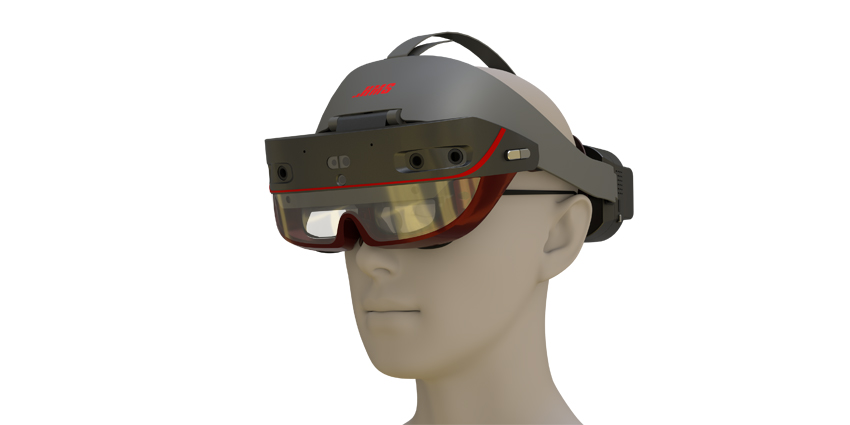Connecting with customers in today’s digital-first environment require careful strategy from today’s business leaders. There are countless other companies already vying for attention in the same landscapes, like the Google search engines and social media platforms. However, each environment is rapidly evolving to help further differentiate each brand.
Meta, previously Facebook, is one of the online platforms for connectivity, communication, and advertising, focused on the future of customer interactions. With Augmented Reality tools designed to allow any company to create their own immersive ad experience, Meta has helped a host of companies reconnect with their audience.
MADE.com, an online furniture retailer, was able to increase its purchases by 2.5 times, and triple its add-to-cart numbers, just by connecting with iOS device users through AR. Here’s how Meta and MADE.com worked together.
Creating a Powerful Try-Before-You-Buy Experience
As customers spend more time online and less time in-store, companies are under increasing pressure to deliver the same personalised and informative experiences to their digital customers. The more empowering the advertising experience is, the less likely companies will need to spend extra time and money handling returns and similar issues.
MADE.com is one of the more modern furniture and lifestyle companies on the web today. Digitally native from launch, the company has always focused on an online audience, making it easier for the brand to adapt when the pandemic prompted changes in the way people shopped.
The MADE.com brand produces a host of high-quality and exclusive designs for customers interested in interior design and furniture. Customers can transform their homes with furniture delivered through a small-batch production model. So far, MADE.com has achieved phenomenal success across the Netherlands, the UK, Switzerland, Germany, France, Austria, Spain, and Belgium.
As competition continues to rise in the furniture space, however, MADE.com wanted to make sure it was staying one step ahead of other brands in its field. The company decided to invest in a new level of advertising with the help of Meta and the AR advertising environment offered by the social brand.
A combination of video and augmented reality experiences allowed MADE.com to test out new technologies as a way of attracting, informing, and supporting customers. The company wanted to use AR as a way of ensuring people could continue to experience the beauty and impact of its products, even at a time when the pandemic was preventing in-store furniture shopping.
Unlocking Augmented Reality
With the potential to unlock the creative side of customers, by allowing the combination of the real and virtual worlds, AR felt like a natural solution for MADE.com and its advertising strategy. The company decided to try building an AR experience specifically for people using Apple iOS devices. The solution would be accessible only to Apple users, via ads on Facebook.
The company wanted to determine whether making an “immersive” experience with key products from its product catalogue would be effective at attracting new customers and raising brand awareness for long-term growth.
To create the AR experience, MADE partnered with the design company North Kingdom and Facebook Creative Shop company. The Creative Shop also assisted MADE.com in creating ads which would encourage customers to click through, by showing them previews of the experience.
The resulting AR experience, focused on providing insights into MADE products by allowing customers to see them in real-size through their smartphone camera, was built with Spark AR from Facebook (now Meta). The solution allows users of the iPhone app to virtually download and place multiple pieces of furniture in their home, seeing exactly what they might look like prior to purchase.
MADE.com wanted to give their customers the chance to see how different styles of furniture and different colors might work together before committing to a purchase.
At the same time, four ad variations were designed to allow users to preview the AR experience. These ads appeared in the Facebook News Feed only to people using Apple mobile devices.
To test the results of the campaign, MADE.com conducted a comprehensive study using the in-built analytics available from Meta’s toolkit. The study involved comparing the standard MADE.com video adverts available on Facebook, with the impact of the augmented reality experience.
MADE’s typical video ads ran at the same time as the AR advertisements, throughout both Facebook and Instagram, targeting customers between the ages of 20-65 – the same age group the company was targeting with he AR ads.
Powerful Experiences for a Social Audience
The eye-catching and intuitive augmented reality experiences created by MADE.com attracted thousands of people to the retail site. Many even became new customers. Between February 8th and March 22nd, 2021, the campaign achieved some amazing results.
When the product was viewed in virtual reality, MADE.com achieved a massive 2. 5 times higher conversion rate, and a 3 times higher add-to-cart rate. This indicated the use of AR helped customers not only to better visualize the products they might want to buy, but also convinced them to make that ultimate purchasing decision.
What’s more, MADE.com also found implementing the AR ads through Meta was an excellent way to strengthen brand reach. The company achieved a 40% increase in ad recall driven by augmented reality.
What’s more, 63,000 additional sessions were recorded on the larger MADE.com website, and attributed to the augmented reality app. In this number, more than 90% of all customers were new users of the site.
While the video ads produced by MADE.com certainly had some impact on the company’s target audience, and helped to highlight the beauty of the products on offer, there was a significant impact from the company’s switch to the AR landscape too. Implementing augmented reality experiences for customers allowed them to unlock a whole new level of try-before-you-buy experiences.







